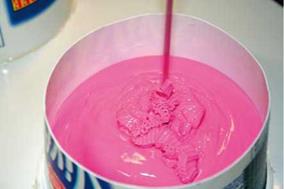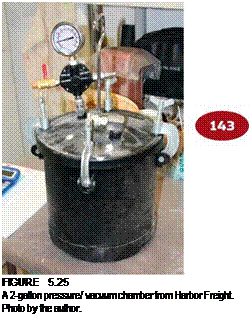 Gypsum molds are not the only kinds of molds you can make that are used for special makeup effects. We’ll look at them one by one and talk about their uses and how to make them. Other materials used for mold making include silicone rubber, fiberglass, urethane rubber, and urethane plastic resin. The two-piece front and back mold you just made is called a case mold, but there are case molds that are made in numerous pieces that must be bolted together. There are matrix
Gypsum molds are not the only kinds of molds you can make that are used for special makeup effects. We’ll look at them one by one and talk about their uses and how to make them. Other materials used for mold making include silicone rubber, fiberglass, urethane rubber, and urethane plastic resin. The two-piece front and back mold you just made is called a case mold, but there are case molds that are made in numerous pieces that must be bolted together. There are matrix
 molds, flood molds, box molds, block molds, and plate molds, injection molds and pour molds, and pressure molds and vacuum molds.
molds, flood molds, box molds, block molds, and plate molds, injection molds and pour molds, and pressure molds and vacuum molds.
Some of these names might be confusing, so let me do a bit of clarifying. A box mold is just what the name implies—it is made by creating a box shape around the sculpture that is to be molded.
However, sometimes the shape that needs to be molded will not conform to a basic four-sided box shape without causing an inexcusable and unnecessary waste of mold-making material.
![]()
 Box molds are also known as block molds for the same reason: their block shape. These box/block molds can be, and most often are, made with silicone rubber or urethane rubber, but they can also be made out of plaster, Ultracal, or urethane plastic resin. That material can be poured, or flooded, in, hence the names flood mold and pour mold.
Box molds are also known as block molds for the same reason: their block shape. These box/block molds can be, and most often are, made with silicone rubber or urethane rubber, but they can also be made out of plaster, Ultracal, or urethane plastic resin. That material can be poured, or flooded, in, hence the names flood mold and pour mold.
If you really want to get technical, I suppose you could call the Ultracal case mold you’ve made a brushed case mold since you essentially brushed on the Ultracal to create the mold. What matters is that there be no confusion about terminology among people working FIGURE 5-24
Various plate molds.
togeth^ on any gwen projm. Photo by the author.
 Like the other molds I’ve described, a plate mold describes what it is: a flat, one-piece mold resembling a flat plate, or a slab. Plate molds are essentially box molds.
Like the other molds I’ve described, a plate mold describes what it is: a flat, one-piece mold resembling a flat plate, or a slab. Plate molds are essentially box molds.
These types of molds are frequently used for creating generic prosthetic appliance pieces such as cuts, scars, bullet holes, and the like, by sculpting the particular injury or feature on a flat surface and then creating a box mold around the sculpture and casting it in stone or plastic. Don’t forget to release the surface on which you are making the mold or you could fuse them together and never get them apart.
The way these molds are used is usually as follows: Gelatin or silicone is cast into the negative of the sculpted feature and excess material is scraped away with a flat scraper of some sort, leaving a piece that is flat on the back with very fine edges. I’ll show you how in Chapter 6.
